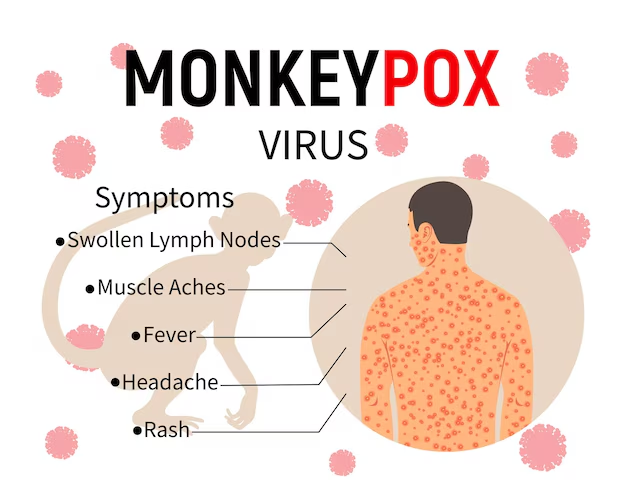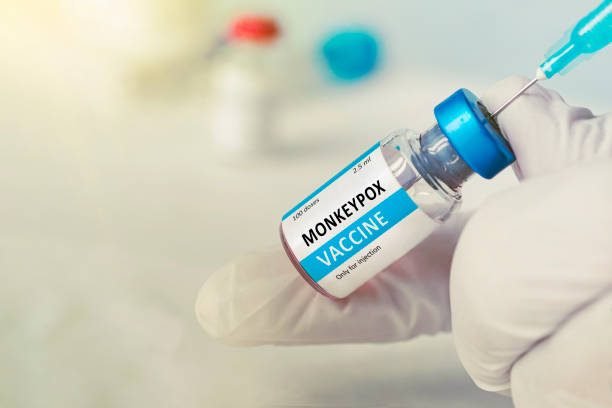Mpox ( Monkeypox) is a rare viral disease that has gained global attention due to its similarity to smallpox. Although it is less severe than smallpox, it can still cause serious health concerns. Knowing how to identify monkeypox, its symptoms, causes, and transmission can help prevent its spread and guide early treatment.
What is Monkeypox?
Monkeypox is a viral infection caused by the monkeypox virus, which belongs to the same family of viruses as smallpox. The virus was first discovered in 1958 in monkeys used for research, hence the name “monkeypox.” However, it is not limited to monkeys. The virus can infect various animals and humans.
Is Monkeypox Dangerous?
While monkeypox is less severe than smallpox, it can still cause significant health problems, especially in people with weakened immune systems. The disease often runs its course over several weeks, but severe cases can lead to complications, including pneumonia, encephalitis (inflammation of the brain), and eye infections, which may lead to vision loss.
What Are the First Signs of Monkeypox?
The first signs of monkeypox usually appear 5 to 21 days after being exposed to the virus. Early symptoms are similar to the flu and can easily be mistaken for other viral infections.
Early Symptoms Include:
- Fever: One of the first signs of monkeypox, usually lasting a few days.
- Headache: Severe headaches are a common early symptom.
- Muscle Aches: Pain in muscles and joints can develop alongside fever.
- Fatigue: A feeling of extreme tiredness or weakness is also common.
- Swollen Lymph Nodes: This is a key sign that differentiates monkeypox from smallpox. Swollen lymph nodes can appear in the neck, underarms, or groin.
After these early symptoms, a rash typically develops within 1 to 3 days. This rash starts on the face and spreads to other parts of the body, including the hands, feet, and sometimes the genitals.
Causes of Monkeypox
Monkeypox is caused by the monkeypox virus, which spreads through close contact with an infected animal or person. There are two main types of the monkeypox virus: one is more commonly found in Central Africa, while the other is prevalent in West Africa. The virus can enter the body through broken skin, respiratory droplets, or mucous membranes (eyes, nose, mouth).
How Do People Catch Monkeypox?
Animal-to-Human Transmission:
People can contract monkeypox through direct contact with the blood, bodily fluids, or skin of infected animals like rodents or monkeys. Eating undercooked meat from infected animals can also be a source.
Human-to-Human Transmission:
The virus spreads through close contact with an infected person. This includes touching monkeypox sores, respiratory droplets from coughs or sneezes, or materials that have come into contact with body fluids like bedding or clothing.

Symptoms of Monkeypox
Once the rash develops, it goes through several stages, each with distinct symptoms:
- Macules: Flat, red spots appear on the skin.
- Papules: The spots become raised, turning into small bumps.
- Vesicles: The bumps fill with a clear fluid.
- Pustules: The fluid turns cloudy, forming pus-filled blisters.
- Scabs: The blisters eventually dry out and form scabs, which fall off after healing.
Common Symptoms Include:
- Fever
- Rash (face, body, hands, feet, and sometimes genitals)
- Chills
- Muscle aches
- Back pain
- Headache
- Exhaustion
- Swollen lymph nodes
Transmission of Monkeypox
Monkeypox can spread from animals to humans and between humans. The virus spreads primarily through close contact. Here’s how transmission occurs:
1. Direct Contact with Infected Animals:
Handling or eating undercooked meat from infected animals can transmit the virus. This is more common in areas where the virus is endemic (Central and West Africa).
2. Person-to-Person Transmission:
Respiratory Droplets:
Prolonged face-to-face contact can result in transmission through respiratory droplets (coughing, sneezing).
Skin Contact:
Direct contact with lesions, body fluids, or scabs can transmit the virus.
Contaminated Objects:
Touching objects like bedding, towels, or clothing that have been in contact with the monkeypox rash or body fluids can spread the virus.
Is Monkeypox Airborne?
Monkeypox is not classified as an airborne disease like COVID-19. It requires prolonged and close contact to spread through respiratory droplets, making it less contagious than some other viruses. However, precautions should still be taken to avoid transmission, especially in healthcare settings or households with an infected person.

Treatment for Monkeypox
Currently, there is no specific treatment for monkeypox. Most cases are mild and resolve on their own within 2 to 4 weeks. However, supportive care and symptom management are essential.
Treatment Options Include:
1. Antiviral Medications:
In severe cases, doctors may prescribe antiviral medications originally developed for smallpox.
2. Pain Relievers:
Medications such as ibuprofen or acetaminophen can help reduce fever, muscle aches, and pain.
3. Fluid Intake:
Staying hydrated is crucial to prevent dehydration, especially if the person is experiencing fever or diarrhea.
4. Isolation:
Infected individuals should stay isolated to prevent the virus from spreading to others.
Smallpox Vaccine for Monkeypox:
The smallpox vaccine offers about 85% protection against monkeypox. In certain regions, healthcare providers may recommend vaccination for people exposed to the virus to help reduce the severity of the disease or prevent it altogether.
Preventing Monkeypox
Since monkeypox is transmitted through direct contact, avoiding exposure to infected animals or people is the best prevention method. Here are some key prevention tips:
Avoid Close Contact:
Limit direct contact with individuals who have symptoms or are infected.
1. Practice Good Hygiene:
Wash your hands regularly with soap and water, especially after contact with sick individuals or animals.
2. Handle Animals Safely:
Avoid contact with wild animals, especially in regions where monkeypox is common, and ensure meat is thoroughly cooked before consumption.
3. Wear Protective Gear:
Healthcare workers or those caring for infected individuals should wear masks, gloves, and other protective clothing to reduce exposure.
Conclusion
While Monkeypox is rare, its potential for spread and the severity of its symptoms make it important to understand how it works. Recognizing the first signs, like fever and rash, can help with early identification. By knowing the causes, symptoms, transmission routes, and treatments, people can better protect themselves and their communities. In the event of an outbreak, following public health advice and maintaining good hygiene practices can help prevent transmission.











